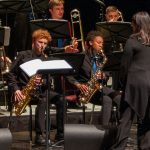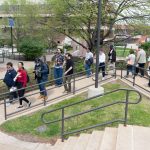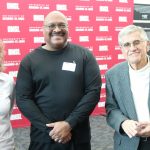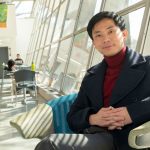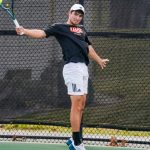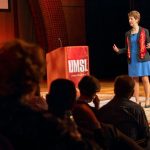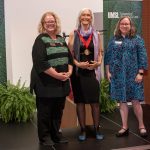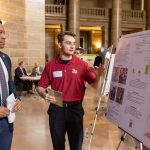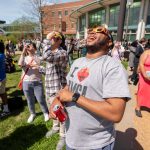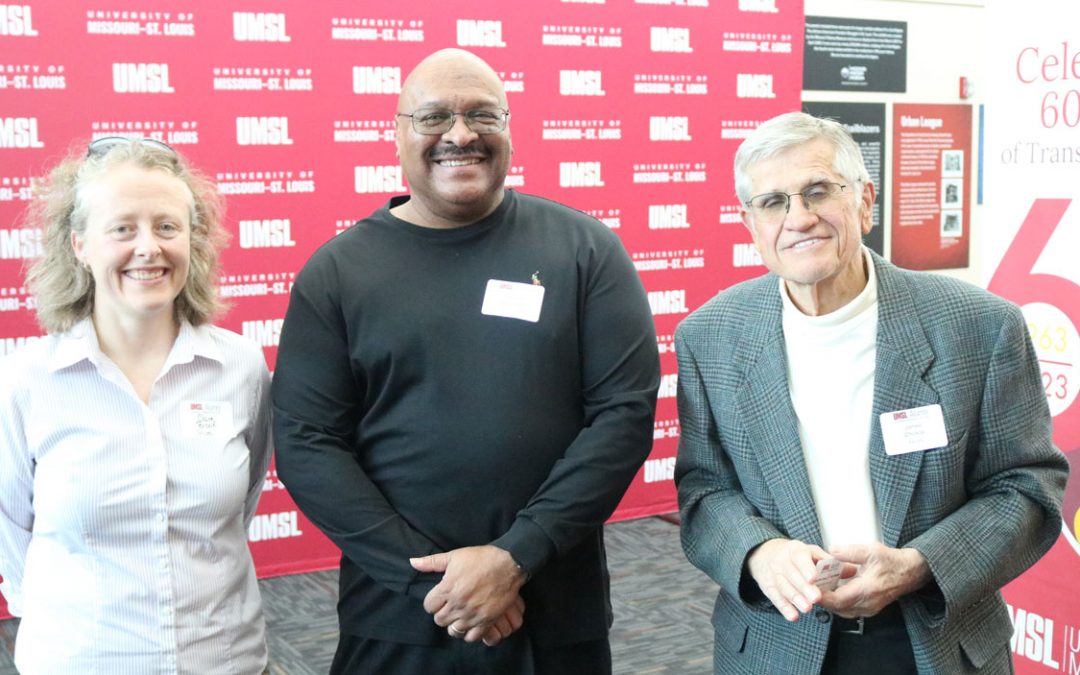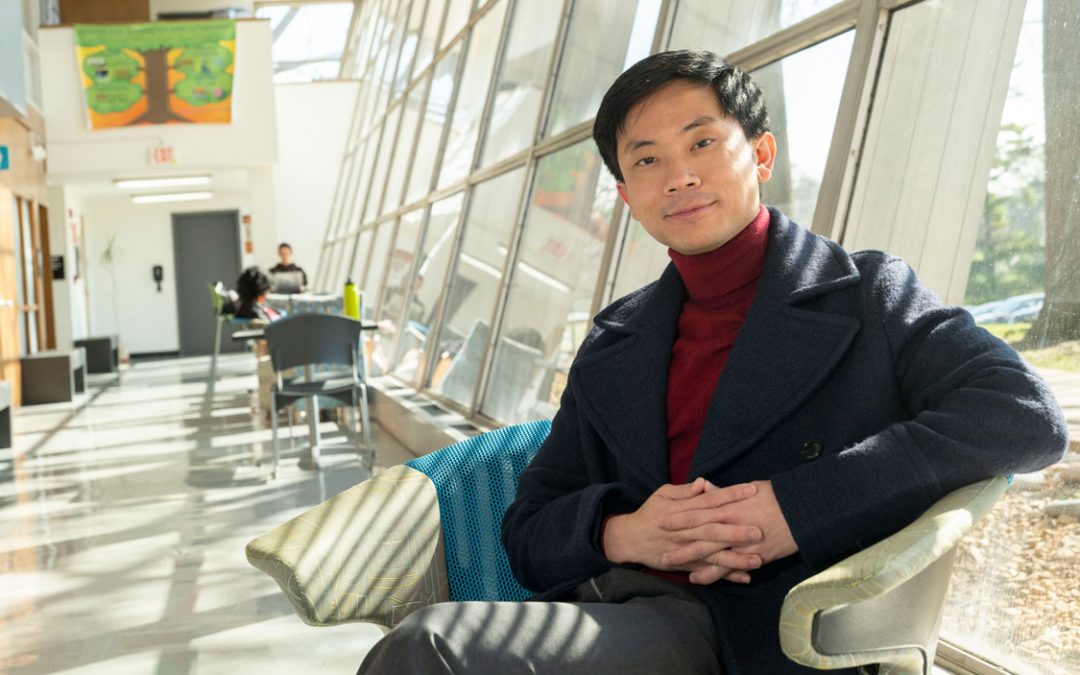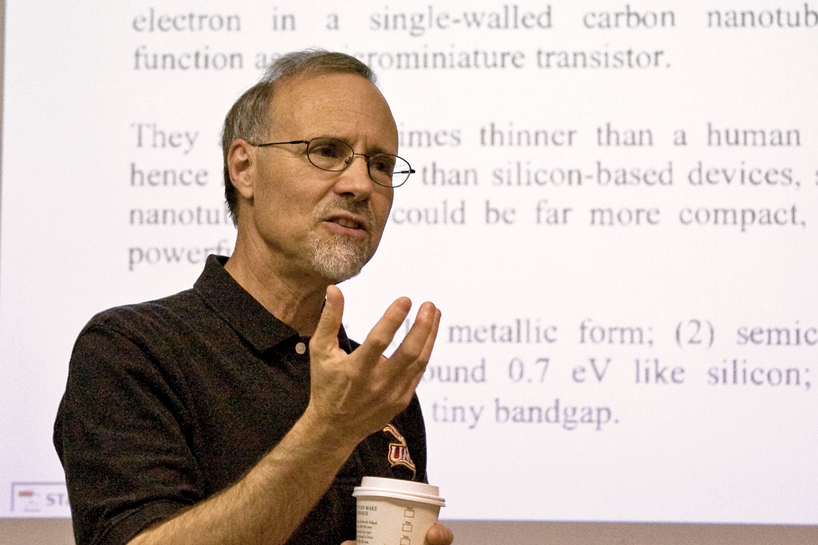
UMSL Chancellor Tom George lectures students about carbon nanotubes. George has a new textbook out, “Computational Nanomedicine and Nanotechnology: Lectures with Computer Practicums,” which discusses the combination of science and technology therapies that help selectively kill cancer cells. (Photo by August Jennewein)
Tiny particles fighting cancer cells – that’s the focus of a new textbook with the University of Missouri–St. Louis Chancellor Tom George’s name on it.
“Computational Nanomedicine and Nanotechnology: Lectures with Computer Practicums” was published by Springer in 2016 and became available for purchase this month. It is also available on Amazon. George, who is a professor of chemistry and physics at UMSL as well, co-wrote the book with Renat Letfullin, a professor of engineering at Rose-Hulman Institute of Technology in Indiana.
 The textbook specifically discusses the combination of science and technology at a seriously tiny scale and how that combination targets cancer cells. While cancer is the main concern, the methods can also be used to treat other varieties of tumors as well.
The textbook specifically discusses the combination of science and technology at a seriously tiny scale and how that combination targets cancer cells. While cancer is the main concern, the methods can also be used to treat other varieties of tumors as well.
One such nanotechnology explored in detail is called “nanophotothermolysis.”
“We apologize for such a long word,” George teases. “It means the selective killing of cancer cells by means of nanoparticles heated by radiation.”
Just how does that work? A patient receives a shot of small particles that can be selectively delivered to the cancer cells and then heated by light until the cancer cells burn out. The combination of the nanoparticles and radiation technology offers benefits to patients beyond the possibility of killing their cancer.
“This promises to be fast and painless selective treatment at the molecular scale,” George says. “Nanomedicine will fix all sites of the human body at the atomic and molecular levels like we are fixing conventional machines today.”
Besides nanophotothermolysis, the textbook also covers nanodevices, nanodrug design and the emerging fields of nanophotonics and nanoplasmonics, which deal with the nanoscale confinement of radiation and the study of optical interactions on a scale much smaller than the wavelengths of light.
Clocking in at 700 pages and 100 figures and illustrations, George says the material best suits advanced undergraduate students and graduate students.
Besides his role as chancellor and professor at UMSL, George has been a visiting professor of physics at Korea University in Seoul. He earned his bachelor’s degree in chemistry and mathematics from Gettysburg College in Pennsylvania and master’s and doctoral degrees in chemistry from Yale University in Connecticut. George also did postdoctoral work at Massachusetts Institute of Technology and the University of California at Berkeley. His research interests are in the theory of nanoscience, chemical physics and laser-materials interactions, and he has written 775 papers, seven textbooks and edited 18 books and volumes. Some of his many honors include the Marlow Medal from the Royal Society of Chemistry and election to the Korean Academy of Science and Technology. George was also recently appointed president of the Coalition of Urban and Metropolitan Universities.
When he’s not busy with science and chancellor duties, George tickles the piano keys as an accomplished jazz pianist. He plays frequently throughout the St. Louis region and, on occasion, internationally – if his science and administration trips allow him the time.



